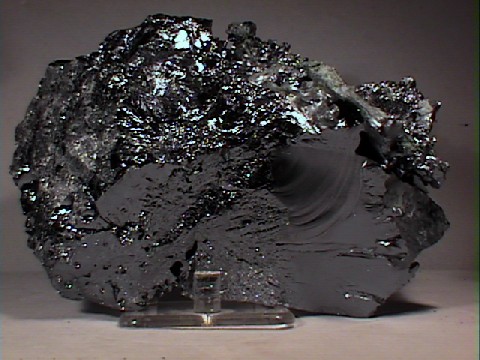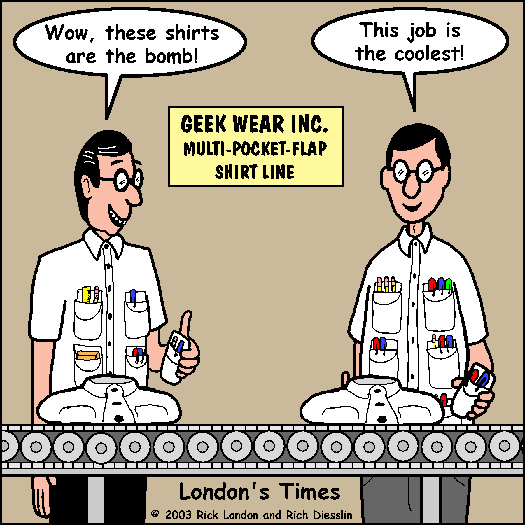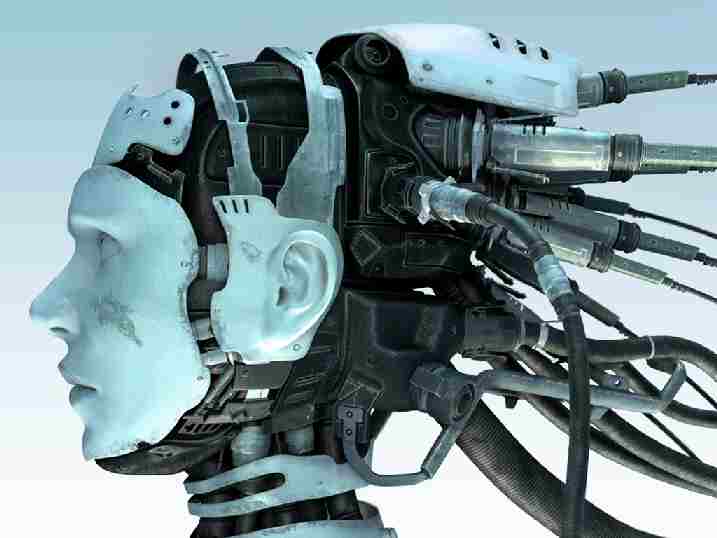
This is a glass fiber with a bundle of semiconductor wires emanating from it. Each wire is just 2 microns in diameter--20 times smaller than a human hair. The glass fiber is glowing from blue laser light. This image shows the wire-packed glass fiber passing through the eye of a needle.
Optical fiber helped bring us the Internet, and
silicon/germanium devices brought us microelectronics. Optical fiber is an ideal medium for transmitting signals based on light, while crystalline semiconductors are one of the best ways to manipulate electrons. One of the current technological challenges is exchanging information between optics and electronics rapidly and efficiently. This new technique may provide the tools to cross the divide. Hooray for semiconductors!
 SILICON
SILICONSilicon is rarely found in nature in its uncombined form. In fact it is amazing how rare native silicon is with 25.7% of the Earth's crust being silicon. Silicon, binds strongly with oxygen and is nearly always found as silicon dioxide, SiO2 (quartz), or as a silicate (SiO4-4). Silicon has been found as a native mineral only in volcanic exhalations and as tiny inclusions in gold.
Of growing interest in rock shops, however, are laboratory-grown silicon boules. Most such specimens are end fragments or flawed discards from the integrated circuit industry. Silicon boules are grown (pulled) from a molten state from a seed crystal, in such a way as to produce a single large crystal which must be completely without crystal defects, or the entire boule must be discarded. Modern techniques can create a single crystal several feet long and up to 10 inches in diameter. These large crystals are sliced into very thin wafers, upon which complex integrated circuits can be etched. The unused parts of the boule are often saved, and used as paperweights or sometimes cut into bookends or other decorative items.
The word silicon (which is taken from the latin word for flint) can be confused with other terms. Silicate (SiO4-4). Silicates are minerals whose primary cation is the SiO4-4 ion group. Another confusing term is silica. Silica is a term used by geologists for SiO2 or silicon dioxide in any form whether it is in the form of quartz, or any of the Quartz Group members, or as a segment of the chemistry of a silicate, or even as silicon dioxide dissolved in water. A geologist might use the phrase, "The magma was rather poor in silica." Indicating an SiO2 content that was lower than expected. Yet another term is silicone. Silicone is a synthetic polymer that is made of silicon, carbon and oxygen and has many medical and some industrial purposes.
GERMANIUM
This is a lustrous, hard, silver-white metalloid. Germanium forms a large number of organometallic compounds and is an important semiconductor material. Germanium has the same crystal structure as diamond. Being a semiconductor, it's electrical properties between those of a metal and an insulator. In its pure state, this metalloid is crystalline, brittle and retains its lustre in air at room temperature. It is one of the few substances that expands as it solidifies. The oxide form, Germanium dioxide, also has the unusual property of having a high refractive index for visible light, but transparent to infared light.
 I think this one was my favorite. I love seeing all the little internal organs and networks. All of the pictures are really beautiful. I would like to have several of them displayed in my home. Because the subjects are so small that we don't see them on a regular basis, it makes them very abstract. You could spend a huge amount of time looking at the images and see new things in them all the time. Some of the pictures easily show creatures that are obviously alive. They are very animal in form. Others, you know that they have life, but it's harder to connect that with what you are looking at.
I think this one was my favorite. I love seeing all the little internal organs and networks. All of the pictures are really beautiful. I would like to have several of them displayed in my home. Because the subjects are so small that we don't see them on a regular basis, it makes them very abstract. You could spend a huge amount of time looking at the images and see new things in them all the time. Some of the pictures easily show creatures that are obviously alive. They are very animal in form. Others, you know that they have life, but it's harder to connect that with what you are looking at.













